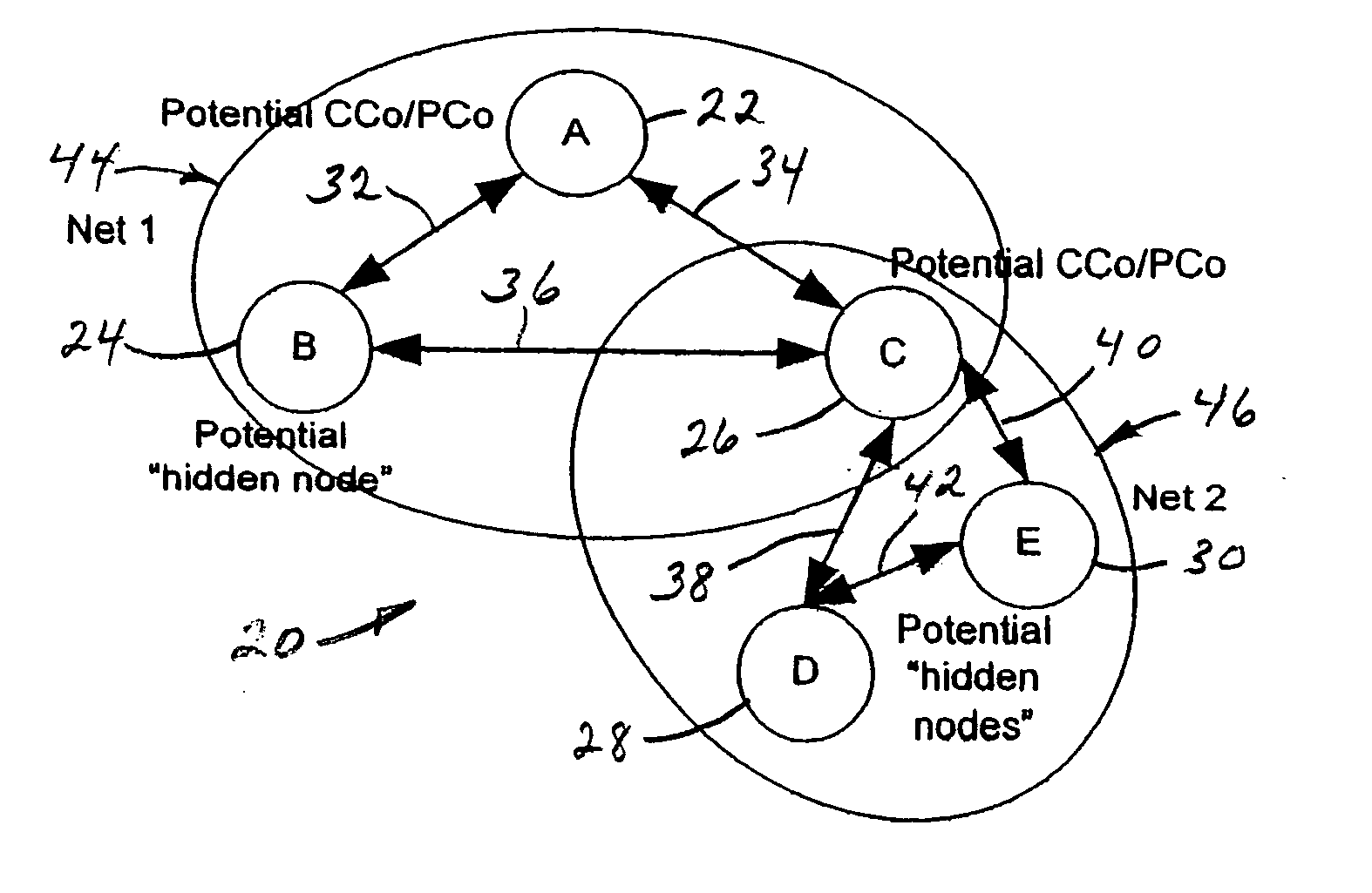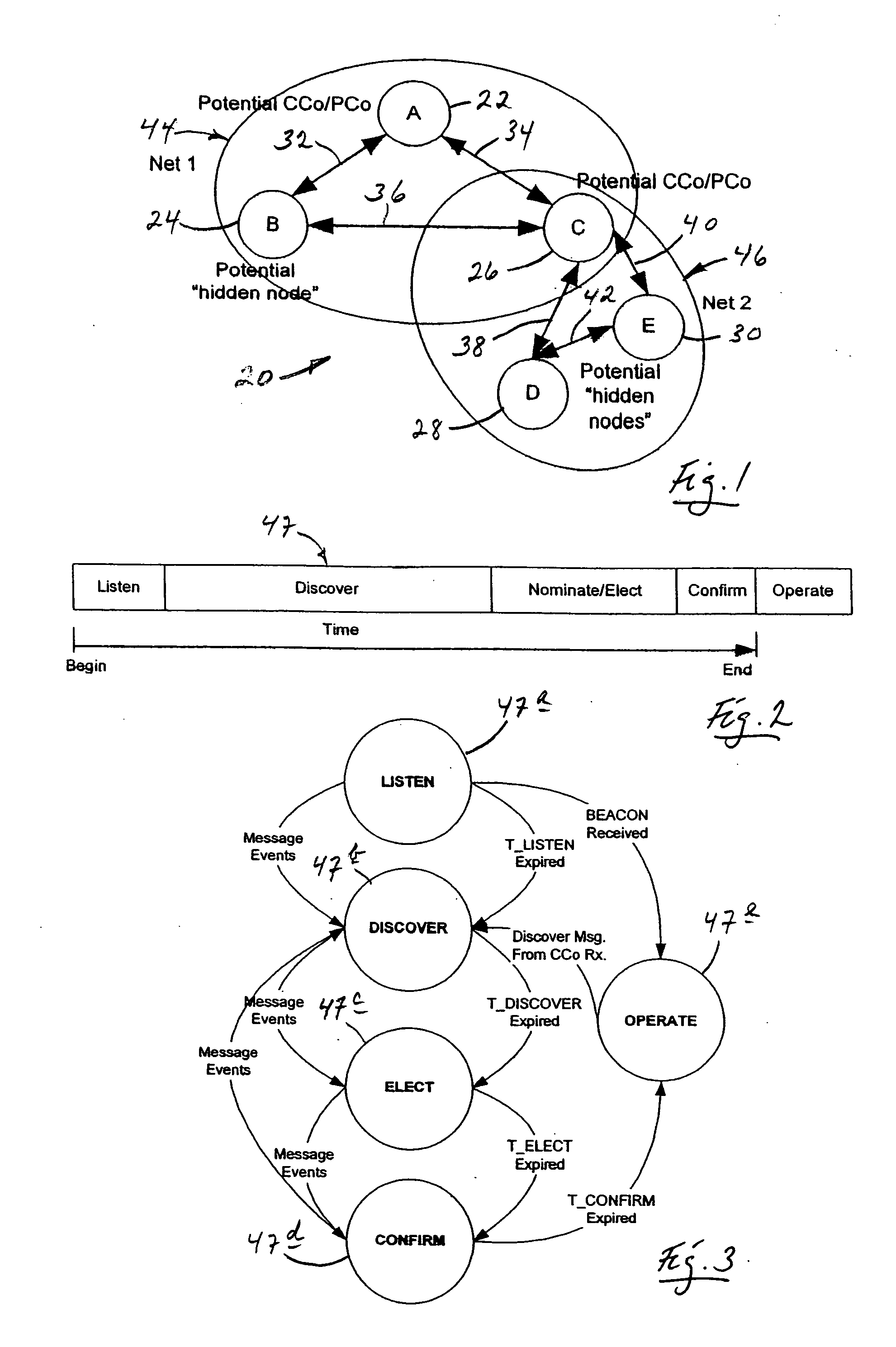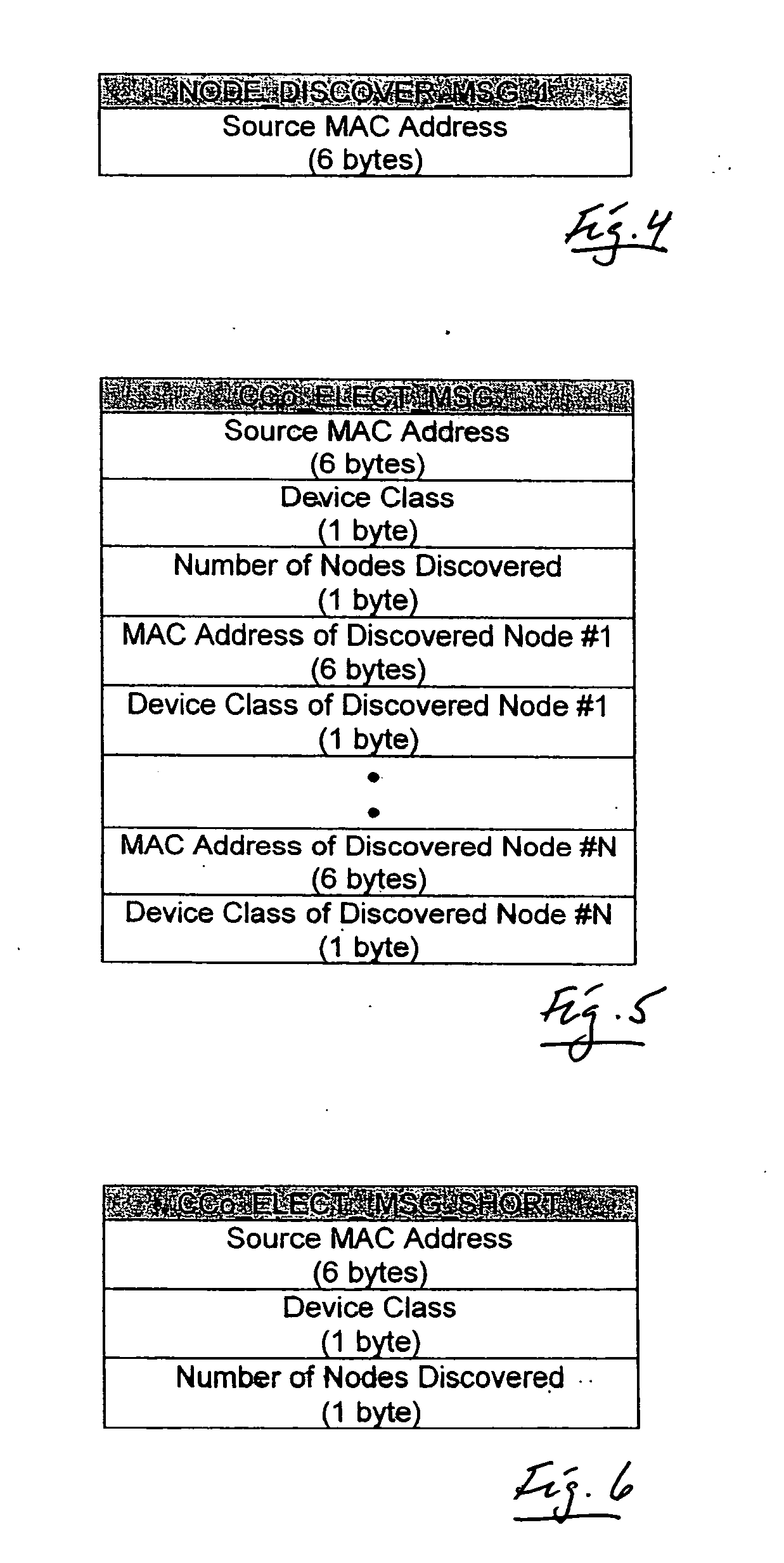Distributed network organization and topology discovery in ad-hoc network
a distributed network and topology discovery technology, applied in the field of distributed communication network organization, can solve the problems of not ensuring no longer controlled or scheduled access to the medium, and inability to ensure that all nodes are connected, so as to reduce collisions, improve throughput, and delay the effect of getting a reasonable number of nodes
- Summary
- Abstract
- Description
- Claims
- Application Information
AI Technical Summary
Benefits of technology
Problems solved by technology
Method used
Image
Examples
Embodiment Construction
[0060] Turning now to the drawings, and referring first of all to related FIGS. 2 and 3, in FIG. 2 there is illustrated, in the form generally of a linear bar graph 47, the basic order of steps performed by practice of the present invention. These steps, in abbreviated terminology, include Listen 47a, Discover 47b, Nominate / Elect 47c, and Confirm 47d, all of which lead ultimately to Operate 47e.
[0061] Every node that seeks to join the network for the first time, or to return to the network it was previously affiliated with after a failure or outage event, uses the process of this invention. As shown in FIG. 2, this process defines five states that a node engages sequentially. The Finite State Machine for this process, which essentially details what is pictured more generally in FIG. 2, is shown in FIG. 3. This process uses a set of timers and messages that nodes transmit in each state. Transitions between states are either message-event-driven or timer-driven. Message-driven events...
PUM
 Login to View More
Login to View More Abstract
Description
Claims
Application Information
 Login to View More
Login to View More - R&D
- Intellectual Property
- Life Sciences
- Materials
- Tech Scout
- Unparalleled Data Quality
- Higher Quality Content
- 60% Fewer Hallucinations
Browse by: Latest US Patents, China's latest patents, Technical Efficacy Thesaurus, Application Domain, Technology Topic, Popular Technical Reports.
© 2025 PatSnap. All rights reserved.Legal|Privacy policy|Modern Slavery Act Transparency Statement|Sitemap|About US| Contact US: help@patsnap.com



